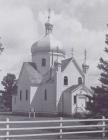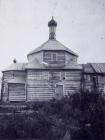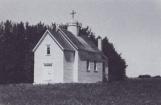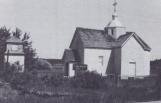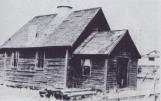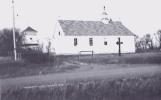1
From Andrew Gregorovich, Many Cultures Many Heritages, 1975, p. 528-529.There were no clergy to serve the early Ukrainian immigrants, nor were there churches. Religion was practiced in the homes.
Although the first Ukrainian Orthodox church was built in 1897 in Gardenton, Manitoba, and the first Ukrainian Catholic church a year later in Star, Alberta, the community still did not have its own priests to perform the basic rites of marriages, baptisms, and burials, or to lead services. The Roman Catholic Church provided clergy, but they were not aware of the strong cultural traditions of the Ukrainian Catholics or of much of their ritual. Olha Woycenko, in her book, The Ukrainians in Canada, sums up the situation:
The Roman Catholic bishops did not sense the group's determination to safeguard its ethnicity. They did not realize that, along with language and other ethnic distinctions, the traditional Ukrainian church was absolutely essential if they were to retain their identity.
Many Ukrainians turned to the traveling Russian Orthodox priests, who were financed by the Russian government. In 1910 the Ukrainian Metropolitan Andrew Sheptytsky of Liviv visited Canada. He recommended to the Pope that a Ukrainian church be set up in Canada.
Rome established a separate Greek Catholic Church, directly responsible to the Pope, in 1912. The popularity of the Russian Orthodox Church declined. In 1913, the Ruthenian Greek Catholic Church was incorporated. In 1951, it changed its name to the Ukrainian Catholic Church. Bishop Budka, the first Bishop appointed by the Pope, was very controversial. His original position at the start of World War I, and his attempts to introduce Latin into the service, caused many Ukrainians to turn away from the Church.
The Ukrainian Greek Orthodox Church of Canada was founded in 1918. It rapidly attracted the discontented Ukrainian Catholics as well as almost all of those who had belonged to the Russian Orthodox Church. While some Ukrainians still belong to Russo-Greek, Ruthenian, or Russian Orthodox churches, and a small number remain Baptists, the majority belongs to one of the two traditional Ukrainian churches.
For the pioneers the churches did not only provide spiritual guidance and religious rituals, but also served as educational and cultural centres. School classes, libraries, concerts, social activities, and political groups still meet in the Ukrainian church.
2
Baptizing of children in a courtyard of Theodor Nemyrsky's houseSpring of 1898
Wostok, Alberta, Canada
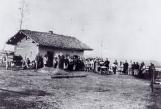 Credits:
Credits:Photograph by Vol. Aleksandrov
Vasyl Chumer
4
The interior of a Ukrainian Orthodox Church1910
Manitoba, Canada
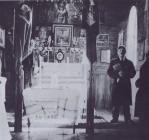 Credits:
Credits:McGrew-Hill Ryerson Limited
6
First Greek-Catholic Church of St. Volodymyr and Olha1904
Winnipeg, Manitoba, Canada
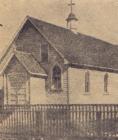 Credits:
Credits:Vasyl Chumer
7
First Ukrainian Orthodox Church in Canada1897-1899
Gardenton, Manitoba, Canada
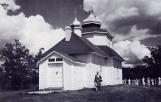 Credits:
Credits:Photo by Andrew Gregorovich
11
Ruthenian settlement gathered at Greek Catholic Church20th Century
Prince Albert, Saskatchewan, Canada
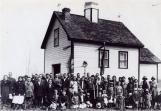 Credits:
Credits:Saskatchewan Archives
12
Ukrainian Pioneer Log Church, St. Elias Ukrainian Orthodox Church (1909), Sirko, Manitoba.1909
Sirko, Manitoba, Canada.
